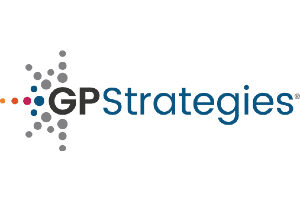Remote work has its benefits: Employees gain increased flexibility and the ability to work anywhere (as long as technology permits) and save time and money. Employers with work-from-home policies have the opportunity to recruit top talent from around the world, which can lead to a more culturally and geographically diverse workforce. Remote organizations also save money on office space and overhead.
But remote work isn’t a walk in the park — a fact many people learned the hard way after adapting to a remote or hybrid environment during the coronavirus pandemic. With blurred work-life boundaries, back-to-back video meetings and constant online distractions, remote work can quickly become taxing.
In fact, a Microsoft study examining how the brain responds to remote versus in-person collaboration found that brainwave patterns associated with stress and overwork were much higher when collaborating remotely than in person and that remote collaboration is “more mentally challenging” than in-person collaboration.
Joe Burton, founder and chief executive officer of Whil, a digital well-being training platform and author of “Creating Mindful Leaders: How to Power Down, Power Up and Power Forward,” says that the ongoing coronavirus pandemic and constant change have left many remote workers grappling with loneliness, burnout, stress, anxiety and insomnia. While these challenges are not new, they have “become more pronounced” over the past year, he says. Mindfulness training can help remote employees manage their mental and emotional well-being “before it manages them,” preventing burnout and maximizing productivity and engagement.
What Is Mindfulness?
Dr. Kristal Walker, CPTM, chief well-being officer at Sweetwater, defines mindfulness as “being fully present in the moment, without any form of distractions.” While it may sound simple, being mindful is easier said than done. “The world we live in is so full of distractions that it becomes almost impossible to focus,” Walker says, with everything from child care responsibilities to personal relationships and even social media notifications “constantly competing for our attention.”
Tahira Jamani, founder of The Chain Reaction, a mindfulness and emotional intelligence training provider, and client engagement manager and mindfulness expert at the workplace mental wellness app headversity, describes mindfulness as moving from “autopilot” to a state of awareness. Meriden McGraw, director of the University of Cincinnati (UC) Center for Integrative Health and Wellness’ workplace mindfulness team at the UC College of Medicine, echoes this sentiment, noting that mindfulness is the “opposite of being on autopilot.” Employees on autopilot are less productive than mindful employees and are more likely to make mistakes on the job, she says. Mindfulness helps employees remain “in the here and now.”
It’s easy for remote workers to feel like they are “always on,” moving from one task to the next without being fully present, Walker says. Mindfulness helps remote workers not only combat cognitive overload but develop the self-awareness needed to recognize when they are feeling burned out, says Jamani, who experienced burnout firsthand before founding The Chain Reaction. Many employees are “on the brink of burnout” and may not even know it, she says. Mindfulness can help them manage burnout proactively rather than retroactively.
Best Practices for Virtual Mindfulness Training
We’ve all heard the adage “take a deep breath” or “just breathe.” But the hype around breathing is justified. In addition to lowering stress and anxiety, a study by the Trinity College Institute of Neuroscience and the Global Brain Health Institute at Trinity found that “the way we breathe … directly affects the chemistry of our brains in a way that can enhance our attention and improve our brain health.” In other words, our breathing can impact our focus.
Consider kicking off your mindfulness training session with a breathing exercise to bring learners into the present moment and away from distractions. Jamani suggests asking learners directly to stop multitasking so they can gain the most out of the training. For remote learners, eliminating distractions means disabling notifications and closing out of additional tabs or programs while in the session. It’s also important to let your learners know ahead of time that you will send follow-up materials and notes after the session so that they can focus on the training rather than taking notes.
We know that training is more successful when it’s linked to learners’ individual job role, and mindfulness training is no exception. Walker encourages trainers to “talk about mindfulness in terms of role-specific functionality.” For example, if you’re training a group of C-level executives, focus on mindful leadership skills such as active listening and self-awareness. If you are training a customer service team, focus on how to foster “mindful customer interactions.”
Mindfulness is about being present in the moment, so it makes sense that learners must be engaged in mindfulness training in order to reap its benefits. Virtual reality (VR) is an effective way to engage learners in mindfulness and well-being initiatives. After all, once you put a VR headset on, it’s “almost impossible to think about anything else,” says Tom Symonds, CEO at Immerse, a VR training provider. VR is also an ideal way to implement mindfulness training at scale, which is why Solas VR partnered with Immerse to deliver its remote mindfulness and meditation training. VR gives learners the space to concentrate on their own well-being and “switch off” all of the other stresses they’re facing, Symonds says.
Another way to engage remote learners in mindfulness training is by making it a group activity, which also serves as a team-building experience, Burton says. “Although your team may be remote, maintaining social connections is extremely important.” Whil, for example, hosts daily team mindfulness sessions and weekly team yoga sessions to “encourage breaks and community.” Incentivizing participation with prizes or a raffle are other ways to make mindfulness training engaging and fun.
Lastly, make sure to supplement your virtual mindfulness training program with actionable tools and reinforcement initiatives. “Micro-practices,” or “short, bite-sized actions that make mindfulness accessible,” such as quick meditations, walking exercises or mental check-ins, can help employees “reground, refocus and reprioritize” on the job, Jamani says. Burton agrees that carving out just five minutes a day to “feed your own peace of mind” can help make mindfulness a habit.
The Return on Investment
As the pace of business shows no sign of slowing down, mindfulness is a crucial skill in every employee’s toolbox. As the COVID-19 pandemic highlighted and exacerbated the compounding challenges today’s employees face, many companies are realizing that employee well-being is an investment, not a cost, Burton says. “Your employees’ ability to control their thoughts, feelings and actions impacts your culture and business results. This includes an increase in overall productivity and a reduction in absenteeism, presenteeism, turnover and well-being claims.”
Mindfulness can shift a company’s culture so that prioritizing mental and emotional wellness becomes the norm, not the exception, Jamani says. This shift directly benefits the bottom line, as mindful employees are more likely to have meaningful and effective relationships with their team members and supervisors — which is especially important on remote teams.
Employees use their mind “all day, every day,” Jamani says. Mindfulness can help them stay mentally and emotionally fit and leave them feeling happier, more stable, healthier and more productive.
Mindfulness and well-being is “crucial work for our communities, for individuals and for workforces,” McGraw says. “It’s exciting to see so many companies commit to taking care of [their people] not just for the bottom line … but to help their employees feel better and be better humans.”


